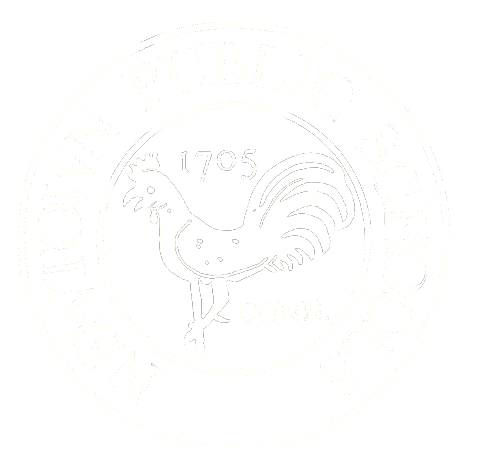Are there specific requirements for the nutritional content of school meals?
Approximately 95% of all public schools in the United States, including Newtown Public Schools, participate in the National School Lunch Program. The United States Department of Agriculture (USDA), through its Food and Nutrition Service administers the program at the federal level, and the Connecticut Department of Education
oversees it at the state level.
The nutritional requirements for the reimbursable meals must meet federal nutrition standards for specific age and/or grade groups.
Lunch:
1/3 of the Recommended Dietary Allowances (RDA)
for calories, protein, calcium, iron, Vitamin A and Vitamin C.
No more than 30% total calories from fat and 10% total calories from saturated fat (and trans fats).
Breakfast:
¼ of the Recommended Dietary Allowances (RDA) for calories, protein, calcium, iron, Vitamin A and Vitamin C.
No more than 30% total calories from fat and 10% total calories from saturated fat (and trans fats).
![]()
How do you plan the school menus?
Schools participating in the federal programs must meet the nutritional requirements by choosing one of four systems for their menu planning:
Traditional Food-Based Menu Planning:
Under this approach, schools must comply with specific components and quantity requirements by offering five (5) food items from four (4) food components (meat/meat alternates, fruits and/or vegetables, breads/grains and milk). Minimum portion sizes are established by ages and grade groups.
Enhanced Food-Based Menu Planning:
This approach is a slight variation of the Traditional Menu Planning approach. The design is similar, but the component quantities for weekly servings of vegetables, fruits, grains and breads are increased.
Nutrient Standard Menu Planning:
Also referred to as “NuMenus”, this approach is a computer-based menu planning system that uses approved computer software to analyze the specific nutrient content of menu items automatically while menus are being planned.
Assisted Nutrient Standard Menu Planning Approach:
Also referred to as “Assisted NuMenus”, this approach is a variation of NuMenus. An outside source plans and analyzes a menu based on local needs and preferences.
Newtown Public Schools follows the Traditional Food-Based Menu Planning Approach.
![]()
Must a student eat the entire meal available?
Not necessarily. By law, the option of Offer versus Serve (OVS) is required for senior high school grades (grade 9 – 12) for lunch, but optional for breakfast. The purpose is to avoid excess food waste and allow for more meal flexibility and variety. For an OVS meal to qualify for federal reimbursement, it must contain a minimum of certain menu item combinations. Offer versus Serve is optional for lunch and breakfast at the lower grade levels. The decision is made by the Local Educational Agency.
![]()





